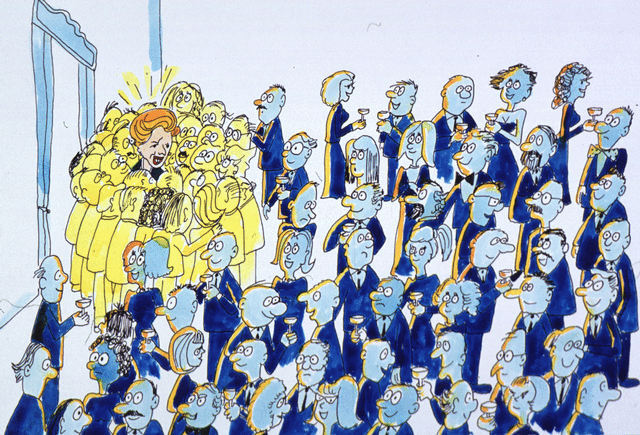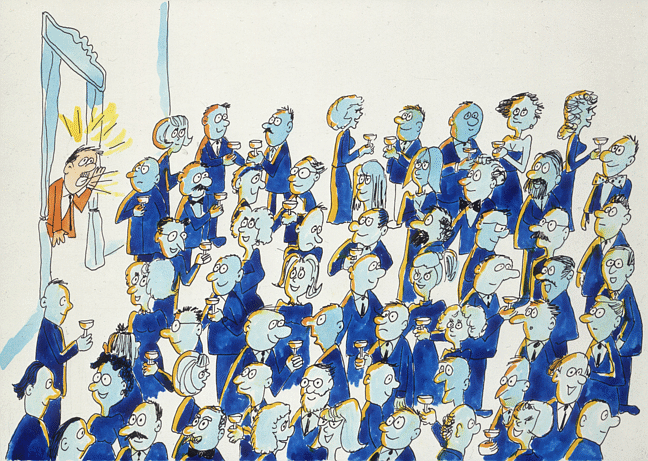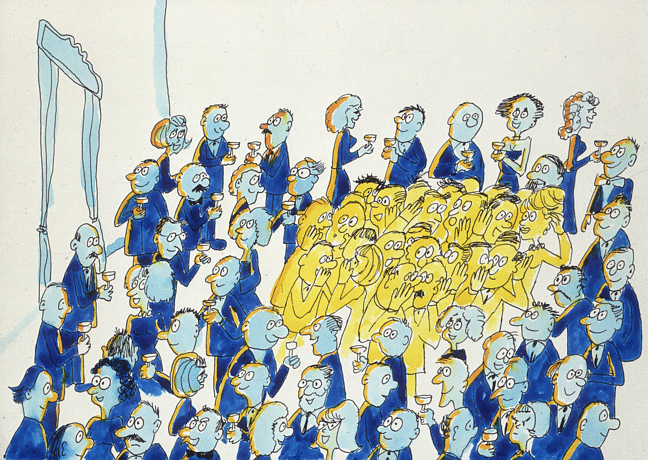Yaaaay, I wroted an essay for the 'History of the Philosophy of Science' module at uni. 2,000 words, on a given topic. The lecturer seemed to like it!
Why is Sir Francis Bacon a candidate for the title “Founder of Modern Science"?
Sir Francis Bacon, lawyer, essayist, politician and philosopher, produced a number of philosophical works promoting science and laying out a logical system for its pursuit. His rhetorical voice and reforming zeal helped precipitate modern science from the technological advances of the time. He wished to reform systems of thought such that readers might see beyond the received wisdom of scripture and Aristotelian teachings and so bring practical benefits to humanity.
Born in 1561 to Sir Nicholas Bacon (Keeper of the Seal) and Lady Anne Coke Bacon (the learned daughter of a leading humanist), Francis Bacon was educated after the fashion of the time, in the scholastic tradition. Through Latin he was taught logic, natural philosophy, medicine, law and theology. The uniting theme in all these areas was the systems and traditions of Aristotelian thought.
Aristotle (384-322 BC) wrote on an incredibly broad range of topics, from logic to poetry, rhetoric to zoology, music to ethics. Of particular interest to this discussion are his methods of constructing systems of knowledge.
Fundamental to Aristotelian thought is the idea that our minds are blank slates, and that impressions derived from the evidence of our senses are a true representation of the world. From observations general rules are drawn, then by deduction working back from these general rules, axioms are created. The test of their truth is whether they can be supported in debate, and whether they satisfy someone's imaginative preconceptions, rather than if they are able, as Bacon put it, to "direct him and give him light to new experiences and inventions" [Bacon,1887:232]. Crowley [1668] describes how these "...pleasant Labyrinths of ever-fresh Discourse" created a system of beautiful idealisations, perfect circles and straight lines, "Pageants of the Brain".
The methods of deduction propounded by Aristotle did not include an external method of refutation, but are defended by "refutation of refutations" [Russell, 1946:195]. Instances which do not fit the axioms drawn from the general rules are classed as aberrations or 'monsters'. Aristotle's position near the end of the golden period of early Greek philosophy left him a largely unchallenged position, and Russell [1946:157] asserts that "after his death, it was two thousand years before the world produced any philosopher who could be regarded as approximately his equal".
At the time of Bacon, Aristotelian thought still dominated the structure of scientific and philosophical endeavour, with the ancient Greek's authority almost as unquestioned as that of the church, which itself exercised considerable control over the circulation of ideas. Bacon saw this uncritical acceptance as a huge obstacle to progress, and much of his writing directly criticises Aristotle's ideas. Huge strides in technology and instrumentation were sadly unmatched in philosophy, which could be said to be stultifyingly dogmatic. Publications were subject to inquisition and authors faced censure if considered heretical.
In spite of this oppressive atmosphere, developments such as the compound microscope and telescope enabled unprecedented examination of the natural world, and provided an increasing accumulation of 'monsters' which weighed heavily against received doctrines and centuries of inertia.
A profound example of the assault on Aristotelian and scriptural ideas, as well as a critical turning point in our perceptions of the universe can be seen in the notion of a heliocentric universe.
A mathematician and clergyman, Copernicus (1473-1543) formulated the theory that the Earth both rotated and revolved relatively early in his life, but was not able to give any conclusive evidence. Being a profoundly pious man, he delayed publication of his theory until the year of his death for fear of censure. [Russell, 1946:485] Kepler (1571-1630) made close observation of the planets and identified their orbits as elliptical - anathema to traditional notions of heavenly bodies describing perfect circles.
Along with Kepler, Galileo (1564-1642) ardently championed Copernicus' theory. His developments in telescope manufacture allowed him to make corroborating observations, such as identifying moons in orbit about Jupiter, and the phases of Venus. However, we must recall that these observers themselves cannot be considered free of misconceptions and cognitive bias. Galileo struggled to reconcile the hypothesis of the revolution and rotation of the Earth with the absence of its of observable, mechanical effects. He attempted to wring an explanation of the tides from his incomplete picture of mechanics, invoking fascinating arguments which he himself would not have accepted had they come from an outside source. [Einstein, 1967]
He was famously condemned by the Inquisition for heresy, though Gerard [1913] presents a different slant on the story, asserting that the Catholic Church's condemnation of Galileo was not due to his profession of heliocentrism, but rather to his promotion of it in opposition to scripture. He states that that they were "convinced... that the new teaching was radically false and unscientific... Galileo himself had no sufficient proof of what he so vehemently advocated", providing an example of the Church as arbiters of knowledge at the time.
While his contemporaries attempted to throw off the restrictions of classical thought by presenting hypotheses supported by evidence, Bacon sought to change the world by proposing a new philosophy.
His prolific essay-writing dealt with the subject throughout his life, and from a young age he expressed his dissatisfaction with traditional modes of thought and laid out a grand plan of reform.
Following his education at Cambridge and Gray's Inn, Bacon travelled around Europe and returned inspired by the state of scientific investigation. However, financial circumstances drove him to practice law and seek political office. A member of parliament for 37 years, he shrewdly managed to survive a change of monarch and thrived, becoming Lord Chancellor and having the ear of the King. Eventually driven out of political life by scandal and plot, Bacon devoted the last 5 years of his life to writing. While during his lifetime he was known as a legal theorist, rationalist and systematiser, it is this work on the philosophy of science that he is now remembered for most. Although when he died he had completed only a fraction of his hugely ambitious plans, the completed volumes on his research strategy have had considerable impact.
Bacon proposed the creation of a general theory of science, that could be applied over all branches of knowledge and would allow practitioners to progress beyond what was possible using traditional methods.
Fundamental to his approach is the idea that the human mind, rather than a blank slate receiving the evidence of our senses, is an imperfect mirror that reflects an imperfect image of reality. He identifies sources of misconception, 'idols' of the mind: innate human failings, closely-held doctrines, imperfect language and received philosophical systems [Klein, 2009]. Critically, this final idol highlights that what has gone before not only can but must be challenged before useful work can be done. Bacon entitled his work on research methodology Novum Organum, setting it up in direct opposition to Aristotle's Organum, or 'system of knowing'. This conceptual shift towards identifying and battling subjectivity is central to the pursuit of modern science.
Bacon proposes that once influences on the mind have been isolated, the natural philosopher should approach observation with an open mind, in an empirical fashion: gathering knowledge on the topic of interest without any prejudicial notions of what the outcome might be. From these data axioms are constructed by induction, each one thoroughly tested by observation, which gradually build upon each other in a pyramid of knowledge culminating in general laws.
We see Bacon's rhetorical style in his comparison between traditional philosophers as spiders, spinning webs of thought from their own bodies, and empirical investigators as bees, gathering information and building it up via their methods of reasoning into nutritive knowledge.
Bacon directs that tables of instances of the phenomenon under investigation should be drawn up, that agreements, differences and variations be identified, which will direct the investigator toward axiomatic truths. This is a hugely impractical and labour-intensive operation, and in fact modern scientific methods rely more on the hypothetico-deductive method, where the power of intuition and creativity is utilised in proposing a solution, which is formalised, and then investigated with the aim of corroborate or falsifying the theory. While few if any researchers have directly used the purely inductive method (Pomphrey, 2009), the beauty of these notions is that they can be challenged, that they set up a different starting point from which better methods can be developed.
While a man of faith, Bacon developed upon St. Tomas Aquina's 13th Century ideas separating articles of faith from knowledge gleaned by reason. He proposed a collective institution for the investigation of the natural world, funded by the state and completely independent of the Church. Named "Solomon's House", or alternatively the "College of the Six Days Works", it sought "the knowledge of causes, and secret motions of things; and the enlarging of the bounds of human empire, to the effecting of all things possible". [Bacon, 1623] With a hierarchical structure divided into teams for particular spheres of investigation, it has its echoes in the modern conception of a research university. While Hegel criticises Bacon as a low-minded philosopher for civil servants and shopkeepers [Simpson, 2005], his emphasis on worldly and practical outcomes of science seems to to be a key part of what made his ideas so successful.
Bacon's familiarity with techniques of rhetoric, debate, persuasion and law are evident in his writing. While it bears testament to his flair that some of Shakespeare's works have been arguably attributed to him, his focus was not on literary merit. Pitching his writing at political decision-makers of the time, Bacon aimed to mould their agendas and guide their policies. [Simpson, 2005] He appealed directly to their patronage, painting pictures of the benefits his new philosophy could offer. His rhetorical prowess also meant that his ideas could be transmitted directly, without need for generations of scholars to digest his work and distil its merit.
Shortly after his death, we can see Bacon's ideal of Solomon's House being attempted in earnest. A circle of eminent thinkers (John Wilkins, Jonathan Goddard, Robert Hooke, Christopher Wren, William Petty, Robert Boyle et al.) formed the "Invisible College" out-with the existing university structure, meeting weekly to perform and discuss experiments investigating the natural world. After the reformation, the college was reformed and obtained a royal charter, becoming the Royal Society of London in 1660. Later chaired by Newton, the Society lauded Bacon as its inspiration.
Members of the Royal Society considered him a "daring originator of a new intellectual era" [Simpson, 2005], and their attitude is succinctly expressed by Adrian Cowley in his poem To the Royal Society [1668]:
"Bacon at last, a mighty Man, arose
Whom a wise King and Nature chose
Lord Chancellor of both their Lawes...
"The barren Wilderness he past,
Did on the very Border stand
Of the great promis’d Land,
And from the Mountains Top of his Exalted Wit,
Saw it himself and shew’d us it... "
Cowley paints Bacon as a visionary reformer, transmitting to contemporaries and followers the future of natural enquiry, the “promis'd Land" that only he had the capacity to see. Perhaps he might be considered more as a vocaliser and systematiser of what was happening in the world in his time, but either way his ideas were influential, despite their incompleteness. While his methods might have been imperfect (such as the exclusion of hypothesis from his inductive method), his separation of philosophy from theology and emphasis on observation with an open, unencumbered mind form the basis of the ideals of science as it is practised today.
Bibliography:
Bacon, F., The Works, Volume III, Spedding, J. et al. (ed), (London, 1887)
Bacon, F., New Atlantis, (London, Rowley, 1623) E-book: (US, Project Gutenberg, 2001), Accessed 1 November 2010, URL: http://www.gutenberg.org/files/2434/2434-h/2434-h.htm
Cowley, A, “To the Royal Society", Works, (London, 1668)
Einstein, A., “Foreword", Dialogue Concerning the Two Chief World Systems—Ptolemaic & Copernican, Galilei, G., (USA, University of California Press, 2nd ed., 1967)
Gerard, J., “Galileo Galilei", Catholic Encyclopedia, Herbermann, C.G. (ed), (USA, Robert Appleton Company, 1913)
Klein, J., “Francis Bacon", The Stanford Encyclopedia of Philosophy (Spring 2009 Edition), Zalta, E.N. (ed.), URL = http://plato.stanford.edu/archives/spr2009/entries/francis-bacon
Pumfrey, S., (contributor), “Sir Francis Bacon", In Our Time, BBC Radio 4, 2 April 2009
Russell, B., History of Western Philosophy, (London: George Allen & Unwin Ltd, 1946)
Simpson, D., “Francis Bacon",
Internet Encyclopedia of Philosophy, Fieser, J. and Dowden, B., (http://www.iep.utm.edu, 2005), Accessed 5 November 2010, URL:
http://www.iep.utm.edu/bacon/





